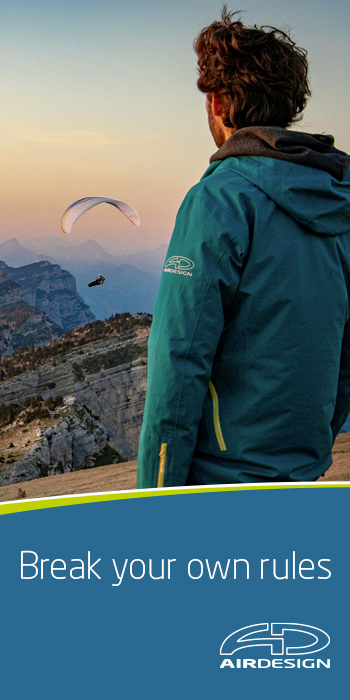
NIVIUK Artik Plume tested by “Les Passagers du Vent” (France)
In the Autumn 2014 after having tested the NIVIUK Artik 4 in the standard version, NIVIUK was asked whether there was going to be production of a light version for the “Bornes to Fly” (hike and fly competition, Lake Annecy). The response was a Yes.
On Wednesday 14th May the wing arrived and with 24hrs of damp weather ahead, time to become familiarised with the equipment began before the first flight.


Flown with an F-Lite harness from Ozone
Weight
On the scales the glider weighs 4.02kg including the rucksack, compared to 5.4 for the standard version.
In order to lose the 1.4g between the two models (light and plume), NIVIUK used dyneema risers and “Li-NK Light System” links, which enable the connection of lines to the risers using mini softlinks, which are 25 times lighter than metal maillons.
The Lark’s head softlinks have also been used for connecting the speedbar to the main accelerator line. The connectors are very easy to tie and untie, even during flight. Rear steering handles made from lightweight material are well positioned and enable increased steering efficiency during transitions.
All the lines are unsheathed. As for the canopy, 38g Porcher has been used in the shaping of the leading edge and overlapping rods maintain the shape of the nose. The rest of the wing is made from 27g Porcher.
Pre-flight and inflation
Pilots should take care when untangling the lines as the upper cascades are very fine. When inflating, light “pulse” inputs lift the canopy from the ground with ease, however attention on steeper slopes when even in a light breeze, the wing’s enthusiasm to fly could take the pilot by surprise. Bringing the wing up gently may reduce the power slightly in comparison to the non-light version. Even with an aspect ratio of 6.1, the wing is barely misshaped. One could even go as far as to say that inflating using the skinny Dyneema risers feels more natural than with the heavier alternatives.
Flying
Handling is similar to the standard version, however the pilot will need to adapt his style in order to accommodate the most efficient body position when thermalling; Perhaps less intuitive than a Sigma 9, the Plume is nevertheless well balanced, and enables the pilot to find all the right angles to climb efficiently. The wing is playful at accelerated speeds and firm piloting is necessary, but the wing reacts in situ, even when given additional prolonged brake input to increase the turn angle.
One could say that the NIVIUK Artik Plume belongs to the sensible category of standard light wings. The pitch and roll movements are dampened and as a result the positive feedback is reassuring, even surprising, when using prolonged brake input in turns.
Even with the configuration and in some fairly meaty conditions, the wing’s reactions are normal for its category; smooth and considerate.
With the Kortel Kolibri, a more conventional association, the wing responds well during long transitions. With little distortion in the centre cells, the sensation is one of a solidity and compactness.
Glide
We were able to make a glide comparison with the LM5 SM (flown at 85kg without a pod harness). In all honesty, there was no noticeable difference in either speed or compared to other wings. What we did notice was the increase in performance as we asked more of the glider. A whistling can be heard through the lines as the relative wind increases substantially.
The glide is surprising even on 2/3 bar, and confirms that to optimise the wing’s performance the accelerator should be used even in thermic conditions.
Who is this wing for?
The Niviuk Artik Plume will do doubt find its place with enthusiasts of the “light” category. It is perfect for vol biv and even hike and fly, where the pilot can concentrate on the surroundings and not be preoccupied by the performance of his wing. The glider is categorised in the ENC class, therefore requires a certain degree of skill, but for a pilot coming from the END class, the wing will feel compact and sensitive to the surrounding air mass. Alternatively, a pilot coming from and ENC wing, will feel reassured from the glider’s feedback, particularly with this light version.
Positive points
– Compact
– Light weight
– Colours of the Plume version
– Innovative riser design
– Accelerated speed
– Speed on glide
– 7.3 kg for hike ‘n’ fly, rucksack and reserve included
Negative points
– a little more speed with arms up could be interesting for those who do not like pushing
– duration of life but you can have your cake, butter money and the dairy cow; is’nt it?
– its rucksack not to its height : it is still the accompanying bag CARGO
– wingtip that is a little too fragile
The Final Word
Easy to handle and performance orientated, the Artik Plume is an attractive asset. Could easily be considered as an every-day wing, although the light-weight and compactness of the wing will inevitably attract those who enjoy travelling and hike ‘n’ fly; the performances obtained with this wing are encouraging. On a more personnal note, this model has already been accounted for in 2015 for numerous hike ‘n’ fly adventures. Altitude for a pilot is the key, and whether hiking or flying, his preocupations are getting there. Either way, this wing will do just that.
sur le site Les Passagers du Vent


